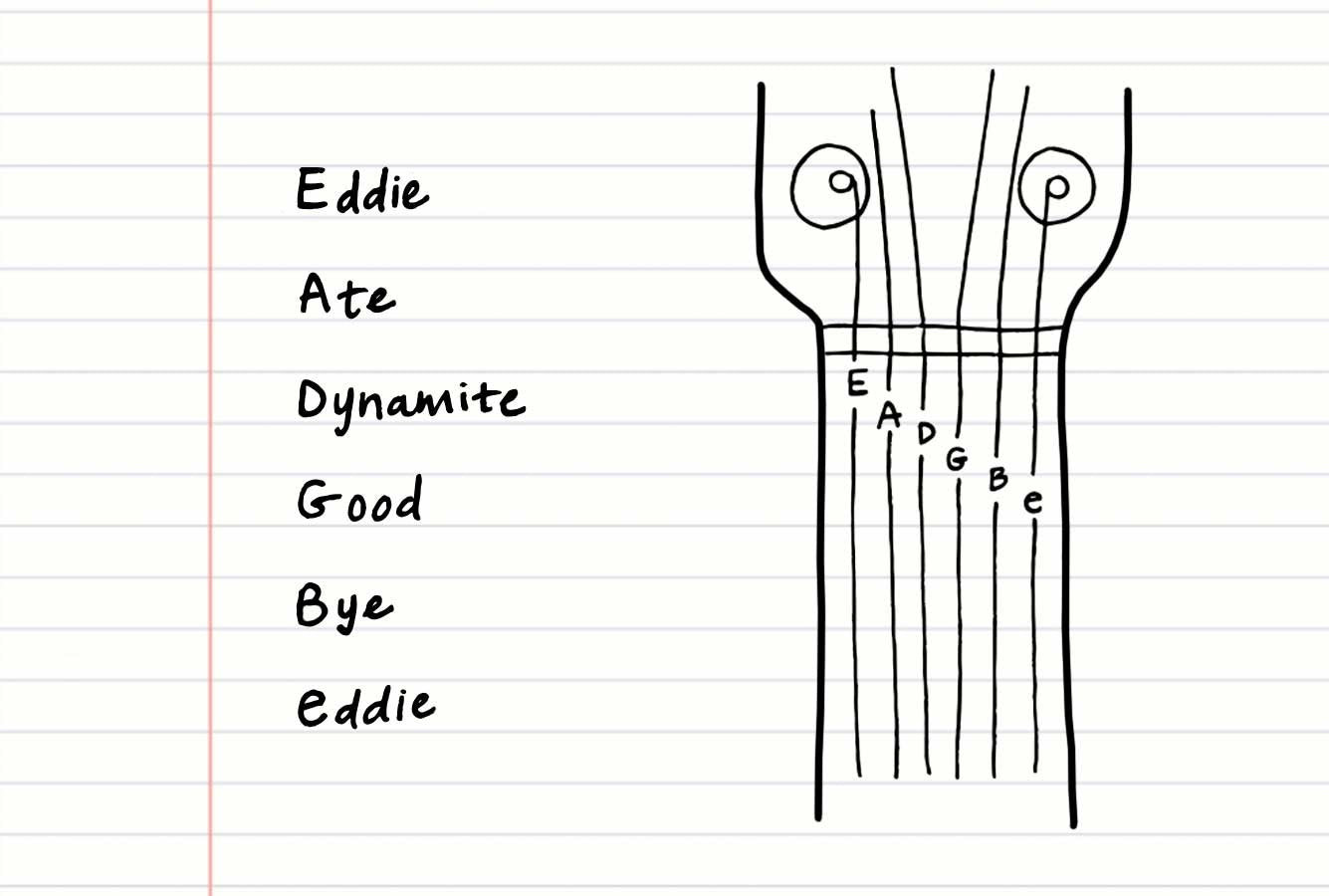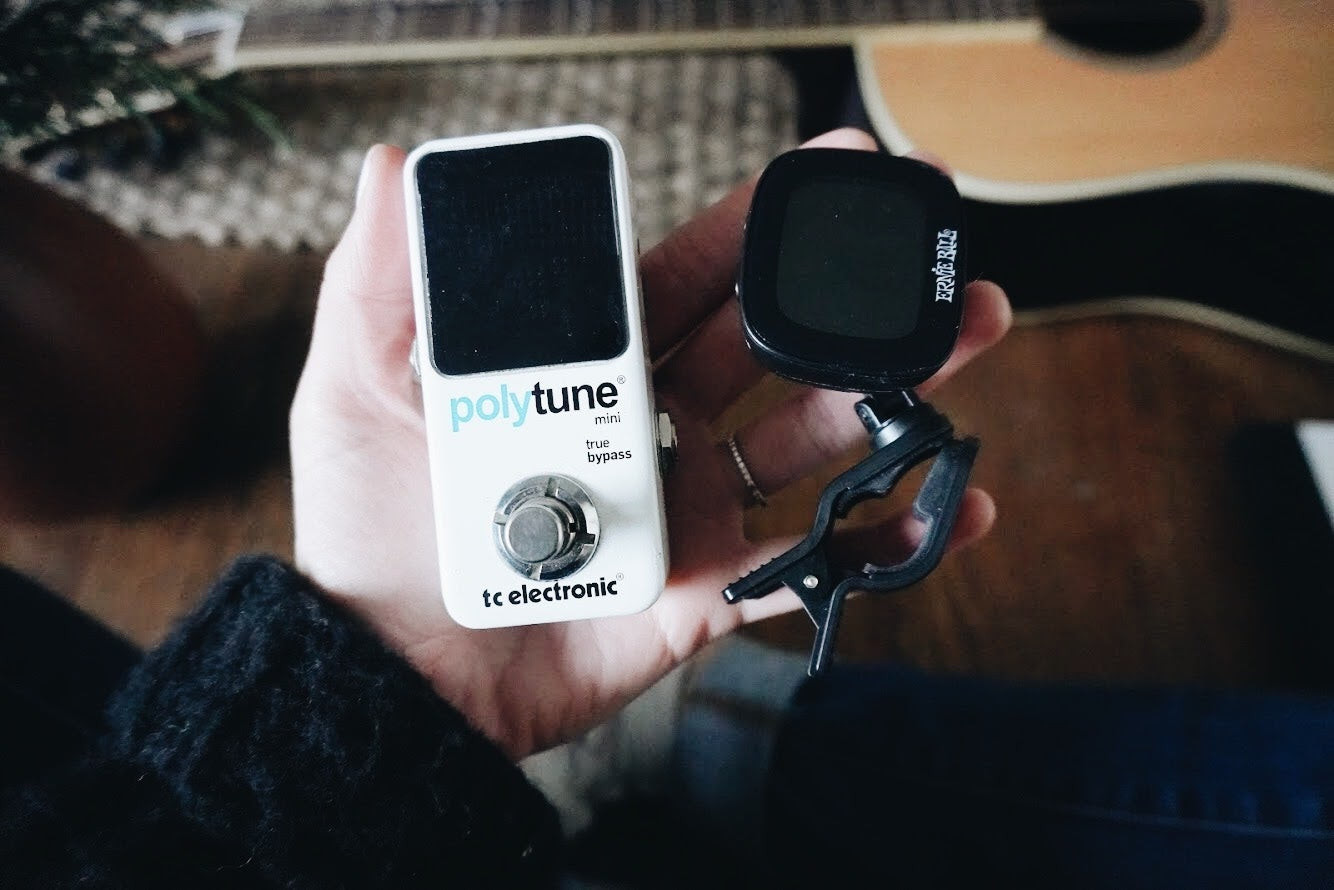Tuning your guitar might seem like a minor detail, but trust me, it’s the bedrock of your entire sound. Imagine listening to a song where every note is just a little bit off – cringeworthy, right? I once saw a guitarist in a dimly lit bar who proudly declared his out-of-tune guitar as “rock-n-roll.” Let’s just say, it wasn’t the rock music I appreciate!
For many new guitar players, tuning can feel like a chore, or something you only think about when things sound obviously wrong. But understanding guitar tunings, especially beyond the standard, is a gateway to unlocking a world of creativity and sonic possibilities. By exploring alternate tunings, you can add depth, color, and unique textures to your playing that you never thought possible.
In this guide, we’ll dive into the essential E-standard tuning, and then venture into some fascinating alternate tunings to spark your musical imagination. But first, let’s address a common question: What Key Is A Guitar In?
While it’s a frequent question, the answer might be a bit surprising. A guitar, in itself, isn’t really “in” a specific key in the way a song is. Instead, a guitar is designed to play in any key. The tuning we use sets the foundation for how we create chords and melodies across the fretboard, making some keys feel more natural than others. Let’s explore this further.
Demystifying “Key”: Standard Guitar Tuning (E-Standard)
Standard tuning, often called E-Standard, is the bedrock of most guitar music. Think of it as the default setting. Unless specified otherwise, virtually all guitar chords, tabs, and song tutorials are based on standard tuning. It’s the sound you’re most accustomed to hearing in countless songs across genres.
In standard tuning, the six strings are tuned to these notes, from the thickest (lowest pitch) to the thinnest (highest pitch): E A D G B e. Memorizing this order is crucial, and there are fun mnemonics to help, like the classic “Elephants And Donkeys Grow Big Ears.”
 Standard Guitar Tuning EADGBE
Standard Guitar Tuning EADGBE
If you’re still getting to grips with tuning, Orangewood Guitars offers an easy-to-follow video guide on how to tune your guitar. Mastering tuning is the first step to unlocking your guitar’s potential.
Now, back to the “key” question. It’s often said that the open strings in standard tuning technically belong to the key of “C.” This is because the notes E, A, D, G, B, and e are all notes within the C major scale (though not exclusively). However, strumming all open strings together doesn’t create a C major chord, or any distinct chord for that matter.
Instead, standard tuning is ingeniously designed to facilitate playing chords and melodies in a vast range of keys. Its origins trace back centuries, crafted based on specific musical intervals that optimize hand positioning and playability across the guitar neck. This is why E-Standard remains the universal standard today – it’s incredibly versatile for playing in virtually any key you desire.
While standard tuning is essential, the beauty of the guitar lies in its adaptability. There’s a universe of sounds waiting to be discovered beyond E-Standard. So, are you ready to get fancy? Let’s explore the exciting world of alternate tunings!
Expanding Your Sonic Palette: What Are Alternate Guitar Tunings?
 Exploring Alternate Guitar Tunings
Exploring Alternate Guitar Tunings
An alternate tuning is simply any tuning that deviates from EADGBE. These tunings empower you to create sounds that are simply unattainable in standard tuning. Often, alternate tunings involve changing the pitch of one or more strings, which fundamentally alters the relationships between notes across the fretboard. This means familiar finger positions for chords in standard tuning will create entirely different chords and sounds in alternate tunings. It might take a little while to adjust when you first start experimenting, but the sonic rewards are well worth it.
Let’s explore some popular and inspiring alternate tunings:
Open C Tuning (CGCGCE)
If you’re seeking instant inspiration and breathtaking sounds, Open C tuning is a fantastic place to start. In this tuning, strumming the open strings creates a beautiful C major chord. While there are variations, the most common Open C tuning is C G C G C E. This tuning truly shines on acoustic guitar, especially when paired with fingerstyle techniques. Its resonant and open sound has been embraced by artists across genres, including Coldplay, Bon Iver, Mumford and Sons, and Ben Howard, who have all used Open C to create their signature soundscapes.
Open G Tuning (DGDGBD)
Open G tuning exudes a classic rock and blues vibe. Perhaps the most iconic artist associated with Open G is Keith Richards of The Rolling Stones. As Marty Music demonstrates in this insightful lesson on Open G, strumming the open strings in this tuning produces a rich G major chord. Open G has a distinctly rootsy, blues-infused character, heard in the music of artists like The Black Crowes, blues legend Robert Johnson, and folk icon Joni Mitchell. Its warm and resonant quality makes it perfect for slide guitar and fingerpicking blues riffs.
The Versatile D Tunings
The key of D offers a rich palette of alternate tunings, each with its own unique character and application. Let’s explore some of the most popular D tunings:
Drop D Tuning (DADGBE)
Drop D is one of the easiest alternate tunings to adopt, requiring only a single string adjustment. Simply tune your low E string down a whole step to D, resulting in D A D G B e. This seemingly small change has a big impact, instantly adding depth and power to your low end, creating a sound favored in blues, rock, grunge, and even country music. Drop D’s heavier sound is prominent in the music of Nirvana, Metallica, Foo Fighters, Led Zeppelin, and country artists like Miranda Lambert, Jason Isbell, and Jake Owen.
DADGAD Tuning
DADGAD takes things a step further, altering three strings to create a tuning with a mesmerizing, ethereal quality. Tuned to D A D G A D, DADGAD tuning has roots in Celtic music and is favored for its spacious, open sound. It’s a popular choice for fingerstyle guitar, folk, and even rock music seeking a more atmospheric texture. Many guitarists find that DADGAD makes even simple chord progressions sound sophisticated and beautiful. Artists known for using DADGAD include Ed Sheeran, Led Zeppelin (again!), acoustic guitar virtuoso Phil Keaggy, and fingerstyle innovator Nathaniel Murphy, who offers a great DADGAD lesson here.
EADGAD and EADGBD Tunings
For a brighter and more uplifting sound in the key of D, consider EADGAD and EADGBD. These tunings, E A D G A D and E A D G B D respectively, retain the standard tuning for the higher strings while altering the lower strings. They create a vibrant and full D major sound, perfect for songs with a cheerful or anthemic feel. “We Were Us” by Keith Urban and Miranda Lambert is a great example of the EADGAD tuning in action, and you can explore a tutorial for this song here. Both EADGAD and EADGBD tunings are excellent for playing open D major chords that resonate beautifully, especially when letting the B and high e strings ring freely.
 Guitar Tuner for Alternate Tunings
Guitar Tuner for Alternate Tunings
Essential Tips For Playing Alternate Guitar Tunings
Stepping into the world of alternate tunings is exciting, and with a few helpful tips, you’ll be navigating them like a pro in no time:
Invest in a Good Tuner
A reliable tuner is your best friend when exploring alternate tunings. A clip-on tuner is a great starting point, and you can often find them in guitar accessory kits like the Orangewood Accessory Kit. Some guitars, like those in the Orangewood Melrose Live Collection, even come with built-in tuners for ultimate convenience. In a pinch, a tuning app on your smartphone can also work.
 Clip-on Guitar Tuner
Clip-on Guitar Tuner
Check Your Tuner Settings: Chromatic is Key
Many guitar tuners, especially clip-on models, have a “guitar” setting, often indicated by a “G.” While this is perfect for standard tuning, it can become confused when you start using alternate tunings. For alternate tunings, a chromatic tuner is essential. Chromatic tuners recognize all 12 notes of the musical scale, ensuring accurate tuning for any alternate tuning you choose.
Be Mindful of Tuning Time
While experimenting is encouraged, be aware that switching between tunings can take time. A casual jam session with friends might not be the ideal moment to delve into a complex Open C tuning, unless entertaining awkward silences is part of your plan! Some alternate tunings involve only one string change, while others require retuning multiple strings. Plan your tuning changes accordingly.
Don’t Forget the Capo: Your Key Change Companion
If you fall in love with a particular alternate tuning but need to play a song in a different key, a capo is your secret weapon. Capos work beautifully with alternate tunings, allowing you to transpose the key of a song without retuning your guitar. If you need a capo, the Orangewood Accessory Kit includes one. A capo is a fantastic tool for vocalists who want to use alternate tunings while keeping songs within their vocal range.
These are just a few of the many inspiring alternate tunings available. The most important thing to remember with guitar is that there are no rigid rules. Experimentation is key! Don’t be afraid to create your own alternate tunings or develop unique ways to play within existing ones.
I hope this guide has given you a clearer understanding of guitar tunings, and inspired you to explore the vast sonic landscape beyond standard tuning. So, tune up, experiment, and most importantly, have fun discovering your own unique voice on the guitar!
______
Haley Powers is a passionate guitar player, blogger, and guitar teacher based in Nashville, TN. When she’s not immersed in music, you can find her enjoying breakfast tacos, hiking with her dog, or watching Outer Banks with her husband.
